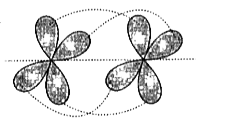Add curved arrows to the following to indicate the flow of electrons for all the bond forming and bond breaking steps

Text Solution
Curved arrows point from the source of an electron pair to the atom receiving the pair, and always point from a site of higher electron density to a site of lower electron density. We must also not exceed two electrons for a hydrogen atom, or an octet of electrons for any elements in the second row.of the periodic table. We must also account for the formal charges on atoms and write equations whose charges are balanced.
In (a), the hydrogen atom of HC1 is partially positive (electrophilic) due to the electronegativity of the chlorine atom. The alcohol oxygen is a source of electrons (a Lewis base) that can be given to this partially positive proton. The proton must lose a pair of electrons as it gains a pair, however, and thus the chloride ion accepts a pair of electrons from the bond it had with the hydrogen atom as the hydrogen becomes bonded to the alcohol oxygen

|
Topper's Solved these Questions
- AN INTRODUCTION TO ORGANIC REACTIONS AND THEIR MECHANISMS ACIDS AND BASESBOOK - MS CHOUHANCHAPTER - AN INTRODUCTION TO ORGANIC REACTIONS AND THEIR MECHANISMS ACIDS AND BASESEXERCISE - SOLVED PROBLEM 3.3
2 Videos
- AN INTRODUCTION TO ORGANIC REACTIONS AND THEIR MECHANISMS ACIDS AND BASESBOOK - MS CHOUHANCHAPTER - AN INTRODUCTION TO ORGANIC REACTIONS AND THEIR MECHANISMS ACIDS AND BASESEXERCISE - SOLVED PROBLEM 3.4
2 Videos
- AN INTRODUCTION TO ORGANIC REACTIONS AND THEIR MECHANISMS ACIDS AND BASESBOOK - MS CHOUHANCHAPTER - AN INTRODUCTION TO ORGANIC REACTIONS AND THEIR MECHANISMS ACIDS AND BASESEXERCISE - ADDITIONAL QUESTION (SINGLE CORRECT CHOICE TYPE )
32 Videos
- AMINO ACIDS AND PROTEINSBOOK - MS CHOUHANCHAPTER - AMINO ACIDS AND PROTEINSEXERCISE - Additional Objective Questions (Integer Type)
1 Videos
- AROMATIC COMPOUNDSBOOK - MS CHOUHANCHAPTER - AROMATIC COMPOUNDSEXERCISE - Additional Objective Questions (Matrix Match Type)
2 Videos
Similar Questions
Knowledge Check
Which of the following diagrams indicate the formation of bonds?
A B
B C
C D
D
Which of the following reactions of an alcohol does not involve O-H bond breaking:
AReaction with alkali metalsBreaction with an acyl chlorideCreaction with sulphonyl chlorideDreaction with conc. Sulphuric acidWhich of the following involve breaking of covalent bond
Aboiling of H2OBMelting of H2OCboiling of benzeneDmelting of SiO2
Which of the following is correct order for indicated bond length?
View SolutionWhich of the following bond order is indication of existence of a molecule ?
View SolutionWhich of the following bond order is indication of existence of a molecule ?
View SolutionWhich of the following can add across the double bond of acetaldehyde ?
View SolutionWhich of the following hydrogen halides is the most difficult to add to the double bond of alkenes ?
View Solution


